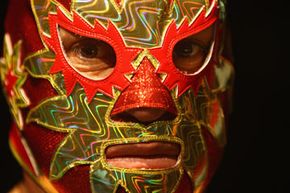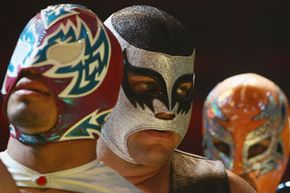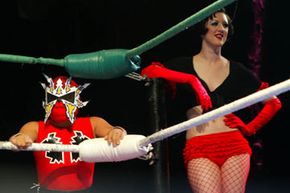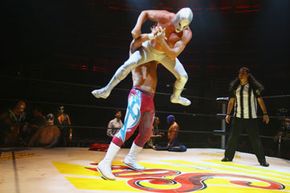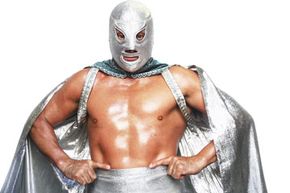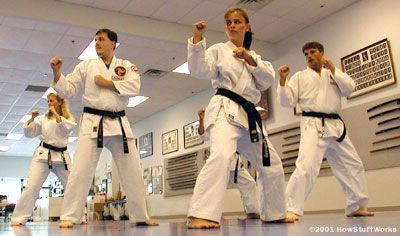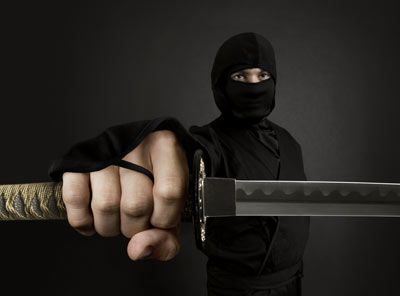If you've ever seen their colorful masks and spectacular acrobatic wrestling style, you know that Mexican wrestlers add a spectacular twist to American pro wrestling. You might not know that lucha libre (the Mexican term for their form of wrestling) has a strong tradition going back decades, that popular Mexican wrestlers become film and TV stars, and that the lucha libre tradition is actually tied to significant social and political issues.
Mexican wrestling is similar in many ways to the form of wrestling that inspired it -- American professional wrestling. Both forms are full of colorful characters and outlandish story lines, and the rules in both types are very flexible and loosely enforced. In fact, lucha libre translates to "free fighting." As with American wrestling, people often say that Mexican wrestling is "fake." In some respects, this is true. The winners of most matches are predetermined, in order to move along planned, soap opera style plotlines. The wrestlers are usually acting out parts -- they don't really hate one another. On the other hand, if you've ever seen Rey Mysterio Jr. perform a Huracán rana, you know that there is nothing fake about the athleticism and training required to pull off the most impressive lucha libre moves.
Advertisement
The most obvious thing that sets lucha libre apart is that almost every major Mexican wrestling star wears a mask and doesn't use his real name (and yes, female wrestlers do exist, but for the sake of pronoun sanity, we'll focus on the men). The true identity of the wrestler is kept secret. In fact, it's an incredible dishonor for a Mexican wrestler to have his mask removed, or to be seen without his mask. In rare special matches, the loser will be unmasked, a momentous event for the fans.
In this article, we'll climb into the ring and explore the world of lucha libre, from its rules and stars to the cultural influences that underlie its spectacle.
Advertisement
